King's Cup - 1934
-
Kirwan, John Daniel
Mr John Daniel Kirwan 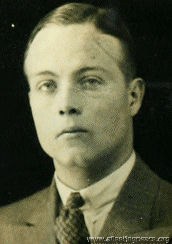 1933, aged 20
1933, aged 20From Perth, 'a student'
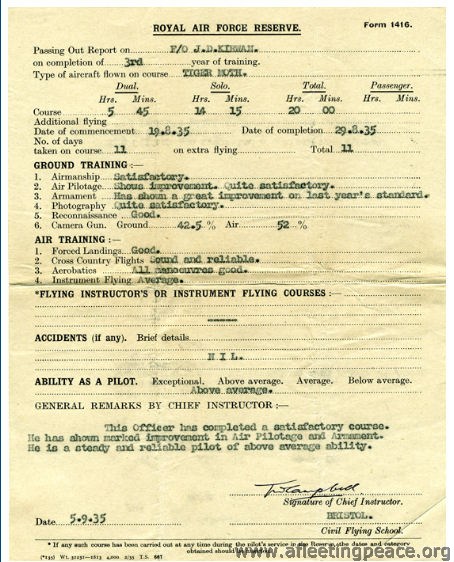
-
Leech, Haliburton Hume
P/O (later F/O, Flt Lt) Haliburton Hume Leech 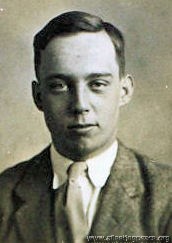
photo: 1926, aged 18
Haliburton H Leech was born 16 Apr 1908, in Wylam-on-Tyne, Northumberland. He competed in 6 King’s Cup races – every year from 1929 to 1934.
His father, Dr. (later Sir) Joseph William Leech, J. P., was the Sheriff of Newcastle-upon-Tyne, and later its M.P.; at the time they lived in Wylam Hall, which according to English Heritage is a vast “rambling house built in the 15th century with 18th-19th century alterations, since divided into 3 apartments”. Haliburton was the youngest of 3 sons.
He went to Harrow from 1922 to 1925, then gained his Royal Aero Club Certificate (No 7993) at Cramlington with the Newcastle-on-Tyne Aero Club, flying a D.H. Moth, on the 10 Apr 1926.
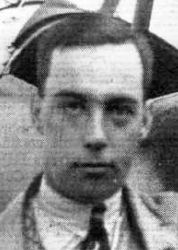
In 1931, Flight described him thus:
“… a well-known figure at flying meetings, as his aerobatic demonstrations in the Martlet are always amongst the prettiest to be seen.
He entered Cranwell as a cadet in 1925, finally leaving there and being posted to Tangmere in 1927.
He was promoted to Flying Officer in July 1929, and in 1930 went to the Royal Aircraft Establishment at Farnborough, and has since been engaged on a great deal of test work, flying a large variety of machines.
This year he was selected as one of the members to join the High Speed Flight at Felixstowe preparatory to receiving his training to take part in the forthcoming Schneider Trophy Race, but, much to his disappointment, he was later sent back to Farnborough, as it was found that there were too many pilots in the flight.
F/O. Leech has raced on numerous occasions in light aircraft, and is always consistent.”
However, during one such aerobatic demonstration, one cynic pointed out that "After all it does not matter if he does crash, as his father is a doctor!”
In 1932, he piloted the Royal Aircraft Establishment’s Scarab (a parasol-wing modification of the D.H. 53 Humming Bird) on its first flight.He was posted to the School of Naval Co-operation, Lee-on-the-Solent, on the 1st March 1934, then (as a Flight Lieutentant) to No. 824 (F.S.R.) Squadron, Upavon, on the 8th October 1934.
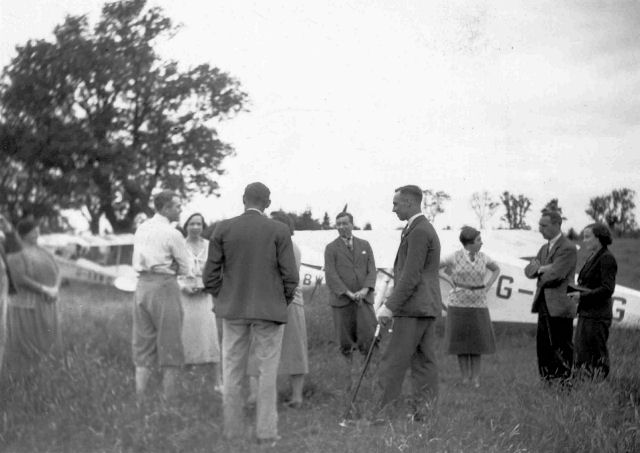
Here he is (with a bandaged left hand) with Leslie Runciman, 'C.C', and Connie Leathart, amongst others He was best man at his elder brother Basil's wedding to Grace Luckham in September 1937, then married Miss Ruth Janet Chernocke Elliott (the younger daughter of Mr and Mrs A E Elliott of Little Hill, Bromeswell, Woodbridge) at Eyke Church, Suffolk on 9th October 1937. The happy couple then left by air, from Martlesham, 'for abroad'.
He died 5th May 1939, in St Bartholomews Hospital, when he was only 31 - I don't know why, I'm afraid. Perhaps it was as a result of a flying accident, or perhaps natural causes. Unusually, 'Flight Magazine', who carried innumerable references to his flying displays, carried no news of his death - normally they would have produced a short obituary of someone so well-known in aviation circles.
His gravestone (with thanks to the Gravestone Photographic Resource) is in Eyke Church:
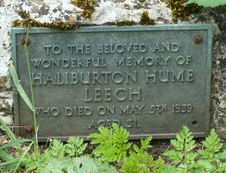 "To the beloved and wonderful memory of Haliburton Hume Leech".
"To the beloved and wonderful memory of Haliburton Hume Leech".His father, Sir Joseph, died a year later.
Ruth married a Mr Foster in 1940 and died in 1986 in Ipswich; she was referred to as 'Ruth Janet C Lady Foster'.
He competed in loads of air pageants and races throughout the 30s, including:
- The Kingston-upon-Hull Air Race, at the Hull Air Pageant which was held to celebrate the opening of the Hull Aero Club clubhouse in April 1930.
The 7 entrants were Leech (flying "Miss Perry's D.H. Moth G-AASG" *); Winnie Brown flying her Avian G-EBVZ; Winifred Spooner in her D.H. Moth G-AALK; Ivor Thompson (D.H. Moth G-AACL); Alfred Jackaman (D.H. Moth G-AADX); Robert Cazalet in his Westland Widgeon G-EBRM, and Capt G Thorne in Avro Avian G-AAHJ.
Leech finished first but was disqualified for ‘not turning at one of the marks’.
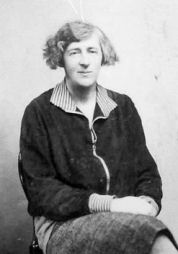
* Miss Violet Perry (seen here), who flew at the Berks Bucks and Oxon Club, is not listed as the owner of G-AASG, though; it apparently belonged to 'Miss M Shillington'.
September 25, 1932 saw him coming 3rd in the Yorkshire Trophy Race - "175 and a half miles over two triangular circuits" in the Arrow Active, behind Edgar Percival in a Gull, and Col. Louis Arbon Strange in his Spartan.
Later, "F/O. Leech gave one of his thrilling, if not hair-raising, displays on the Arrow Active."
In July 1933 he was in the Cinque Ports Wakelfield Cup Race; coming 3rd in a Pobjoy-engined Comper Swift.A few weeks later (12 August 1933), he put up the fastest time in the London to Newcastle Race in Richard Shuttleworth's Gypsy-engined Comper Swift G-ABWW, but ended up 5th (of 10) on handicap. He received a cheque for £10 for his effort; the 166.09 mph was "the highest registered speed obtained on any British light aircraft" at the time.
In July 1937, he was one of 15 competitors in the Devon Air Race (which also included Alex Henshaw, Connie Leathart, Tommy Rose and Geoffrey de Havilland). He came 3rd, in a Spartan Arrow.
In the King’s Cup:
1 - G-EAUM (1929)
This aircraft was a real-old-timer, an Avro 534 ‘Baby’, first registered in July 1920. Squadron Leader Harold Payn had raced it in 1922, and R. A. Whitehead (who sold it to Leech) in 1928. Leech, in turn, sold the aircraft to H.R.A. Edwards, and it was finally withdrawn from use in November 1934.
2 - G-AALK (1930)
This D.H.60G Gipsy Moth was almost new (first registered August 1929), and belonged to the Household Brigade Flying Club at Hanworth. It was flown by Squadron Leader the Hon. Frederick E Guest in the 1931 race, then went to Wrightson Air Hire, but crashed at Shackend Railway Station near Hawick in April 1937.
3 - G-ABIF (1931)
This Southern Martlet 205 had only been registered in January 1931, and belonged to Miss J Forbes-Robinson. Theodore C Sanders flew it in the 1933 King’s Cup race. It was withdrawn from use in 1940, but went to the ATC during WWII, until it was finally cancelled in December 1945.
4 - G-ABVE (1932, 1933)
G-ABVE was the only Arrow Active II ever built, registered in March 1932 to Arrow Aircraft Ltd of Yeading, Leeds. Leech flew this aircraft in the 1932 and 1933 races, achieving 137mph.
In an extraordinary link with MacRobertson aviator Geoffrey Shaw, they were together in July, 1932:
"Six members joined the Yorkshire Aeroplane Club during June, amongst them being Mr. Geoffrey Shaw and Mr. A. C. Thornton. The latter is the designer of the" Arrow Active," and his latest production, the "Active II" has been much in evidence, being tested by F/O.H. H. Leech."
After the race, it was stored at Yeading until 1957 before being completely renovated in 1958, with the installation of a 145-hp Gipsy Major engine. It survives, and is now in the Real Aeroplane Collection at Breighton Aerodrome, Selby, Yorks.
5 - G-ACUP (1934)
Unfortunately, the registration of this brand-new Percival D.3 ‘Gull Six’ did not prove prophetic; Leech only managed fifth in the heats, despite averaging 160mph. The Gull went on to re-appear in the Kings’ Cup in 1938, flown by H Thomas-Ferrand, and was then sold in Australia in May 1939.
-
Lipton, Laurence
Mr Laurence Lipton 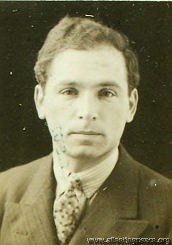 1930, aged 34
1930, aged 34An engineer, from London
Competed in 1933 and 1934 in G-ABVW 'Jason 4', the D.H. Moth he bought from Amy Johnson.
-
Lowdell, George Edward
Wing Cmdr George Edward Lowdell AFM 
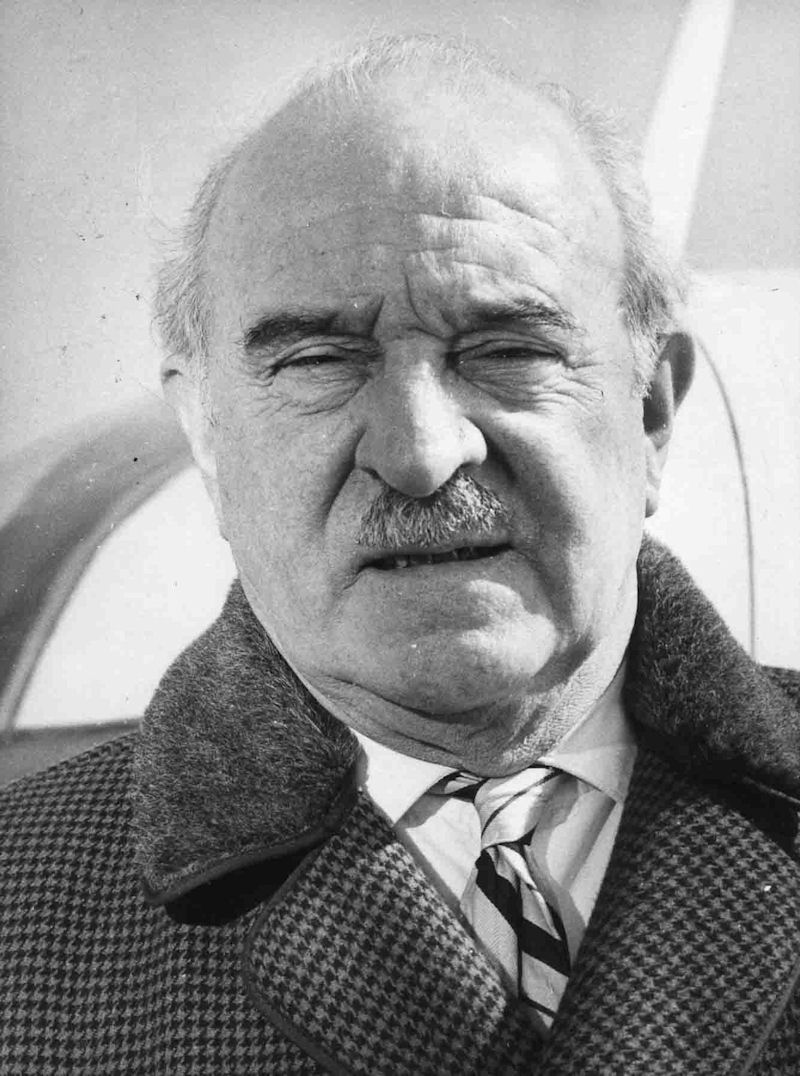
Flying instructor at RAF Digby in 1925 (he taught Allen Wheeler to fly, who said of him "How lucky I was with my instructor George Lowdell! Apart from being a magnificent pilot he was the most inspiring teacher").
Instructor with Suffolk and Eastern Counties Aero Club in 1928; later a Wing Commander, and instructor with Shoreham School of Flying.
However, in 1932 he was convicted of drunk-driving:
"STUNT FLIER FINED
CLACTON CARNIVAL SEQUEL
George Edward Lowdell, 29, an airman instructor, of Belvedere Road, Ipswich, was charged at Colchester on Friday with being drunk in charge of a motor car.
Stanley Elgar, postmaster of Colchester, stated that he was driving his car from Walton-on-the-Naze to Colchester, and just after he had left Weeley he noticed a Morris car in front of him " performing a rather peculiar course all over the road, swerving frequently from the near side to the off.
Several times it mounted the margin of the road, and on one occasion two young ladies had to " skip " quickly out of the way. The speed was never excessive. Near Greenstead Rectory the car was pulled up, and witness went to the driver and said: "Do you realise what you have been doing? You have only just escaped death, and narrowly missed killing other people." Defendant seemed dazed, and when told that he could not go on he said he would have to go on, he had to get to Brooklands tnat night.
Two police-officers came, and defendant was arrested. Replying to Mr. Frampton, witness said the driver did not give him the impression that he was a very tired man. , Arthur Houston, commercial traveller, Thorpe Road, Tendring, who was proceeding in the direction of Colchester, said defendant's car was '' all over the place."
When charged, defendant's reply was so muddled that he could not be understood. Dr. William F. Payne said he came to the conclusion that defendant was drunk. Defendant said he had had some whisky and beer.
Defendant, in the witness-box, said he was formerly chief instructor to the Suffolk Aero Club, and was now instructor at Brooklands. He had been giving a demonstration at Clacton. He flew to Clacton, and during the day gave exhibitions of trick flying and joy rides. In the morning there was an accident, and he was up in the air longer than usual at upside down flying in order to amuse the crowd. During the day he had nothing alcoholic to drink, but after he had finished flying at 6.30 p.m. he had five beers. He had had nothing to eat since luncheon, and left Clacton at 8 p.m. After a heavy day he felt queer when in the car, and kept dozing.
When he arrived at the police - station he felt 'dead tired," and his whole condition he put down to continuous flying, to having no food, and to the heat of the day.
Edwin Freshfield, an undergraduate, and a pupil of defendant, said the stunt flying defendant did that day imposed a great strain. When defendant left Clacton he was very tired, but not drunk. Mr. Frampton submitted that defendant's condition was due to absolute fatigue.
The Chairman (Mr. C. M. Stanford) said the Bench were unanimous in finding the case proved. While it might have been only an indiscretion, they had to take serious notice of it, and defendant would be fined £5, with £2/5/9 costs. The Bench appreciated the action of those witnesses who had come forward at their own expense and loss of time to protect the public, and to save the defendant himself from further danger. "
-
Morton, T W
Mr T W Morton 
?? -
Naish, A L T
Mr A LT Naish Director of Aircraft Exchange and Mart Ltd, Airspeed's sales agents.. Formerly a Flying Officer in the RAF; spent 3 years in the Middle East.
-
Napier, Carill Stanley
Mr Carill Stanley Napier 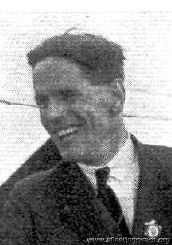 1937, aged 30
1937, aged 30b. 29 Apr 1907 From Putney, London
Son of the famous engine-maker Montague; an apprentice with Westlands in 1929. 'his one recreation apart from flying is the commendable indoor sport of darts. Believes that air-racing is good fun only when taken not too seriously''
Killed in WWII: 29 April 1941, when a First Officer in the Air Transport Auxiliary; buried RAF Halton, Bucks.
see https://www.ata-ferry-pilots.org/index.php/category-blog-1939/53-napier-carill
-
Newman, Evelyn Henry
Mr Evelyn Henry Newman 
ed. Lancing College, then Oriel College Oxford.
prev. RAF and RAF Reserve, 1924-33. Later a commercial pilot for Birkett Air Services.
Air Transport Auxiliary in WWII
see https://www.ata-ferry-pilots.org/index.php/category-blog-1941/418-newman-evelyn-henry
-
Parker, Victor George
Mr Victor George Parker  1932, aged 21
1932, aged 21an Aircraft Engineer from Hertfordshire
-
Patterson, Gabrielle Ruth Millicent
Mrs Gabrielle Ruth Millicent Patterson 
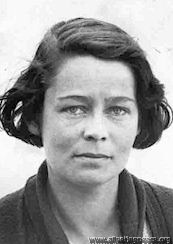 1934, aged 29
1934, aged 29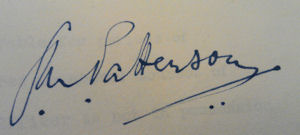
Miss Burr as was, a lady with her own opinions, particularly about race handicapping, which you can read here: Air Race Handicapping.
b. 6th July 1905 in Paddington, London, the eldest of four daughters; grew up in Dover, Kent, but her father was a rather peripatetic amateur entomologist and she was educated all over Europe.
Was very busy in 1931; described as a 'secretary' [actually, she was the Company Secretary of her mother's family firm of upmarket china and glassware merchants, Thos Goode & Sons], and living in Maida Vale, London, acquired both her aviator's 'A' Certificate (No 9752), and her husband, Mr Arthur L 'Pat' Patterson. At the same time, she also competed in the Ladies event at Reading (May, 1931) - the other competitors were Amy Johnson, Grace Aitken, Pauline Gower, Dorothy Spicer, Susan Slade, Winifred Spooner, Christina Young, and Fidelia Crossley - a historic gathering indeed.

Her son, Ian, was born in 1932 in Eton, Oxfordshire, but Gabrielle and Pat divorced in 1939.
In 1938, she wrote an article on the subject 'Would women make good instructors in the event of war'. She, of course, was already a successful instructor, although admittedly her experience was limited, because "a man who is paying for his flying, and whose average age is probably a little greater on that account, is more amenable to reason than the youngster of eighteen to twenty, with his wild oats still unsown."
She thought that women instructors would probably cope, though; "The instructor always starts with the advantage of his pupil's spontaneous respect for a (relative) master of his subject, coupled with a very natural wish to shine. The woman instructor has the added advantage that this respect is enhanced by her supposed greater difficulties in acquiring that (relative) mastery and with the instinctive desire of the male to impress the female. By tactfully and subtly indicating the conduct in the air and on the ground which does win her confidence and does impress her, she can obtain it in nine cases out of ten, and in the face of such a proportion she could certainly count on disciplinary measures for the tenth."
But she worried whether there would actually be enough women to become instructors; her experience was that women didn't make such good puplis as men. "It is arguable that since of good men pilots only a few make good instructors, amongst women (where the number of good pilots is a lower percentage of pupils) the quantity of good instructors would be so small that there could be no justification for spending public funds in discovering them."
The reason for this, she thought, was that "women pilots hitherto have consisted only of those with large enough bank balances".

Flight reported her activities at the time:
19 May 1938: "ROMFORD. Miss Amy Johnson visited the Romford Flying Club last Sunday to present a flag and charter to the National Women's Air Reserve which operates there. There are 125 members of the Reserve, taking flying instruction with Mrs. G. M. Patterson."
15 June, 1939: "Mrs. G. Patterson's G.A.P.A.N. Appointment. All who have come into contact with her will wish to congratulate Mrs. Gabrielle Patterson on her appointment to the Panel of the Guild of Air Pilots and Navigators. This is the first time that a woman has received the appointment.
Mrs. Patterson has been a flying instructor for some years and is now leader of the National Women's Air Reserve, the organisation which has been putting in a good deal of flying —and securing no little amount of newspaper publicity—at Maylands Aerodrome, Romford. Mrs. Patterson herself, it may be added, has always shunned any sort of personal publicity.
She is, we believe, a first-rate pilot and an extremely capable instructor."
She was living in Bristol, aged 34, with about 1,530 hours experience when WWII broke out in September 1939; her son was at Prep. School.
Air Transport Auxiliary in WWII - see Patterson, Gabrielle Ruth Millicent (W.14) (ata-ferry-pilots.org)
She died relatively young, sadly; having completed a degree at Manchester University in the 50s, she moved to France but fell ill with cancer, moved back to Little Missenden, Bucks, to live with her sister, but died there on 31st October 1968, aged 63.
-
Percival, Capt Edgar Wikner
Capt Edgar Wikner Percival 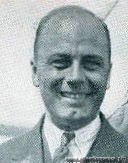 1930, aged 32
1930, aged 32Australian aeronautical genius who ended up in the USA and New Zealand, via Luton.
b. 23 Feb 1897 in Albury, N.S.W. In 1915, while training in England, he became only the third person on record to recover from a spin (supposedly, Fred Raynham [q.v.] was the first). He later wrote: "After that I found that spinning was great fun and spun a Bristol Scout the next day. Very much later, on the Western Front, I found a spin was a very speedy way of dropping on the enemy - especially through a handy cloud."
Designer, and pilot, of some of the finest racing and record-breaking aeroplanes of all time.
"He always flies his rakish Mew Gulls in a soft felt hat and tries to look as much unlike an intrepid birdman as possible, though he has never yet deceived the handicappers by this ruse."
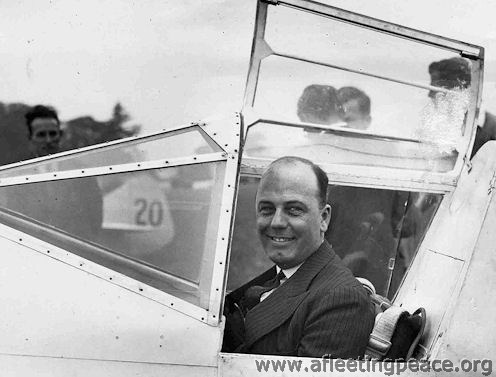 King's Cup 1934; sans trilby, for once
King's Cup 1934; sans trilby, for onceFlight said he "has an uncanny navigational sense in thick weather, but sometimes flies pensively past his destination in 100-mile visibility".
Michael Madigan wrote: "It was very difficult to resist his puckish humour and not to fall under his spell... In his early flying days he had a fox-terrier called Ginger Mick. This dog always sat in the [open] rear cockpit tethered to a spar. One day as Edgar was preparing to land he went into a loop to lose height, forgetting about his passenger. After levelling off he heard strange scrabbling noises from the back and looking out saw Ginger Mick frantically dog-paddling in the air suspended by his lead. Edgar managed to manoevre Ginger back into the plane, and after landing he thought he would never see Ginger Mick again as he rushed off, but Ginger was as persistent an aviator as his master and reappeared, to settle in his place at start-up, large as life, and eager for more."
 In 1956, with the EP.9 'Prospector'. And trilby.
In 1956, with the EP.9 'Prospector'. And trilby.© The Royal Aero Club
d. 21 Jan 1984; his ashes were taken by the RAAF "to be scattered in the very field in Richmond, N.S.,W., where it all began."
"Edgar Percival had a strong character, a high mental and moral sense, and was a perfectionist - the qualities which made him successful. He was the dominant presence which compelled attention in a group. This dominance arose from his vast knowledge of aviation in all its aspects... all this and his strength of will did not make him an easy associate. He could see problems clearly, had the energy to solve them, and drove himself relentlessly, which made him rather intolerant of those less gifted."
(All quotes via Martin Barraclough, for which many thanks)
-
Pope, R P P
Flt-Lt R P P Pope 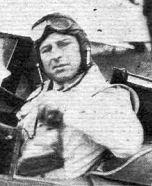
Chief Instructor with Air Service Training
-
Rose, Charles Henry
Sir Charles Henry Rose 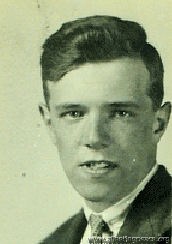
photo: 1932, aged 20
from Oxford.
"Director of the Portsmouth Flying Club and lately director of Portsmouth Southsea and Isle of Wight Airways. Had very bad luck when starting in the King's Cup of 1934. Made forced landing at Aldenham. Again bad luck in London-Cardiff Race in 1934 when motor stopped over finish line."
Another director of PS&IOWA was Lionel Balfour.
-
Rose, Thomas
Flt-Lt Thomas 'Tommy' Rose DFC 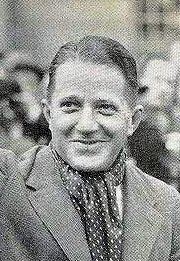 1936
1936b. 27 Jan 1895 - Alton, Hants
One of the best-known racing and pioneering pilots of the 30s.
His father, John, was a farm bailiff at Basing Farm, Froxfield, nr Petersfield, Hants. After working briefly as a bank clerk, Tommy joined the Royal Navy in 1914 and then transferred to the R.F.C. in June 1917.
"He was shot down three times, but escaped each time. He was awarded the DFC for his work with the fighter squadron in which Billy Bishop, VC, served. "
m. 1925 Margaret Elizabeth [Ashford], [divorced 1938]
Retired from the RAF in 1926 with the rank of Flight-Lieutenant.
In December 1931, he made an unsuccessful attempt on the UK-Cape record, and then flew back "by easy stages".
From Oct 1933, Manager and Chief Instructor at Sywell.
"TOMMY ROSE is gone from Sywell, but not forgotten. As sales manager for Messrs. Phillips and Powis, the Reading aircraft manufacturers, he spends quite a lot of time flying round the country. Last week his photograph was 'splashed' in all the national daily papers, greeting Mr. H. L. Brook, the Yorkshireman airman, on his arrival at Croydon after breaking the Australia-England record previously held by Jim Mollison. There was no mistaking Tommy’s famous sports jacket and boyish grin!
Mr. Rose, the way, left a last impression at Sywell. Shortly before leaving, when the new gate was being erected in front of the clubhouse, he carefully placed his foot in the wet cement and printed beside it 'Tom Rose' with a trowel. The cement hardened, and the 'Rose' mark is there for posterity to reverence! Hundreds of feet have since trod the hallowed spot." - Northampton Mercury, 12 April 1935
Competed in the King's Cup six times, winning it in 1935...
![Kings Cup 1938 Tommy Rose [0122-0170]](/images/gallery/air%20races/preview/333s333/Kings%20Cup%201938%20Tommy%20Rose%20%5B0122-0170%5D.jpg)
© The Royal Aero Club [0122-0170]
... and coming second in 1934 and 1936.
[The 1935 King's Cup itself recently sold at auction for £3,900:

Photo kindly supplied by Sarah Chambers, reproduced by kind permission of Sworders Fine Art Auctioneers.]
He became a national hero in March 1936 after his flight to Cape Town and back; "he can now claim to have made the fastest time for the trip both out and home. His new record is 6 days 6 hr. 57 min. (he got to the Cape in 89 hr. 37 min.), which beats F/O David Llewellyn's time—the previous best—by 5 hr. 6 min."
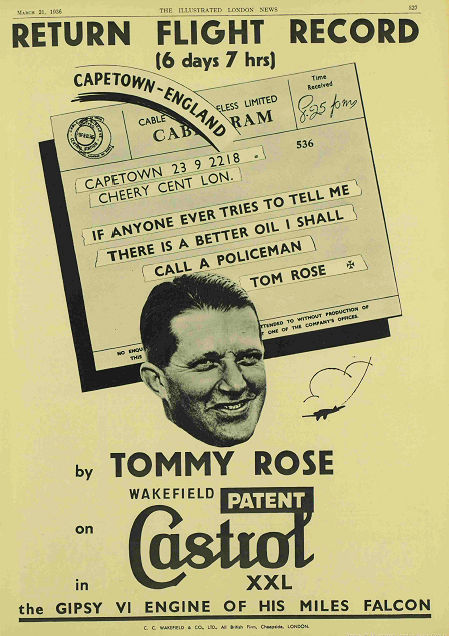
After the flight to the Cape, he had tea with the Prime Minister, General Hcrtzog, and also saw General Smuts. However, he was charmingly modest about his achievements:
"TOMMY ROSE ON LONG FLIGHTS
SAYS RECORD ATTEMPTS ARE 'LARGELY BUNKUM'
This flight business is bunkum! The authority for that picturesquely phrased piece of information is Flight- Lieutenant Tommy Rose, and he should know, for he hit the headlines in all the national newspapers when he smashed all records for the flight from London to the Cape. In a talk to the Round Table at Stewart's Cafe on Monday he summed up the whole business in these few words: 'All long distance flights are largely bunkum. The national newspapers, if there is no other news at the time, whip up an interest in these flights, and if one gets there safely and breaks a record everyone thinks: 'By gad, here's one of the twelve apostles come to life!’ (Laughter.)
'But I assure you there is nothing in it. The only things you have got do to be successful are to get the best machine you can find and then practise sitting still for a long, long time . . . . '
Reflections wise and witty on flying in general and his own flight in particular made Flight-Lieutenant Rose's talk one of the most delightful and amusing to which Tablers have listened to for a long time. His racy manner produced a laugh at almost every sentence, and a more unassuming world record breaker than this genial young man would be difficult to find.
There was one richly humorous story which is worth repeating. 'When I eventually got to the Cape I had to broadcast to the Union,' he said. 'The announcer seemed very nervous and this was what he said: ’Who do you think I have here the studio? None other than Mr Tom Mollison, who flew from London to the Cape in 37 days 18 hours.’ I met General Hertzog few days later and he said: 'if it takes all that time to fly, don't you think you had better come by boat next time?’
Flight-Lieutenant Rose answered a number of questions and urged the need for municipalities laying down landing grounds for aircraft. Members of the Rotary Club and of other Round Tables were present, as guests, to hear the airman’s talk. " - Eastbourne Gazette, 6 May 1936
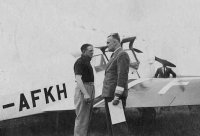
© The Royal Aero Club [0129-0039]
Before the 1936 Schlesinger Race to Johannesburg, he predicted: "It is my opinion that the pilot of the aeroplane which gets there in under forty-eight hours will deserve just about the biggest bunch of bananas ever found.
Having got lost myself many times down this route when flying without wireless, I fully expect to do so again, and the pilot in this race who can honestly say at the end that he was sure of his position all the time will either be very lucky, very clever, or have a queer idea of honesty."
From 1939 to 1946, Chief Test Pilot for Miles Aircraft, living in Sonning, Berks; in July 1943 he was reported to have "improved considerably and to be well on the way to recovery, after he contracted a chill when captaining his works cricket team. "
Won the Manx Air Derby in 1947, still flying a Miles Hawk; three circuits of the island at 181 mph.
d. 20 Jun 1968 - Alderney, Channel Islands.
-
Schofield, Harry Methuen
Flt-Lt Harry Methuen Schofield 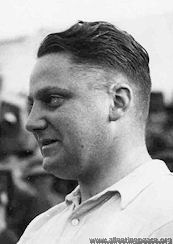
photo: 1934, aged 35
Director and General Manager of General Aircraft Limited, who built the Monospar aircraft. Spent four years after WWI building church organs.
He was a Schneider pilot in 1927 but crashed before the race, because they'd put the aircraft back together wrongly - he was thrown clear in the crash, but his clothes were dragged off, leaving him clad only in a shirt; wrote a couple of books; died 1955.
To see some video footage (and to hear him say “Well, I am very proud to have won this cup…but, um, I think the man who should be speaking is Mr. Steiger who built the machine… I couldn’t have done it without the machine, and I think a lot of people could have won it in the machine, and that’s all there is to be said about it, really”),
click here: King's Cup Air Race - British Pathé (britishpathe.com)
-
Shields, Donald Mitchell
Donald Mitchell Shields 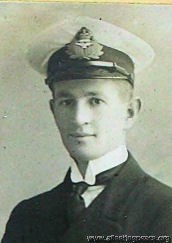 1916, when a Flight Sub-Lt in the Royal Navy, aged 24
1916, when a Flight Sub-Lt in the Royal Navy, aged 24b Delaware, Ontario
-
Sparkes, Sydney W
Mr Sydney W Sparkes 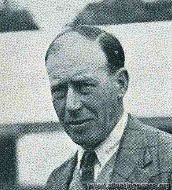 1936
1936"Began his aviation career at Hendon before the War [he was an instructor at the Grahame-White School there] and served with the RNAS throughout it. Remained with the RAF 1918-31 and was instructor for the last seven years of his service. Later he flew for various companies" -
Sutcliffe, W H
Mr W H Sutcliffe 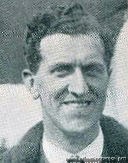 1930
1930Instructor at Midland Aero Club (as was Tommy Rose), the 'energetic' Mr Sutcliffe
-
Symington, Samuel Philip
Mr Samuel Philip Symington 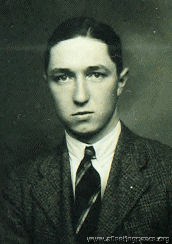 1931, aged 22
1931, aged 22A Works Manager from Market Harborough. Awarded MC in 1945 (Captain in the Leicestershire Regiment)
-
Wilson, John Borthwick
Flt-Lt John Borthwick 'Jack' Wilson 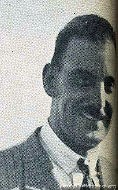 1936
1936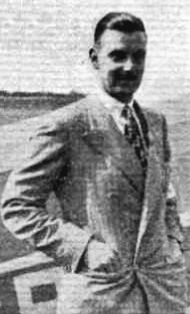 1935 - both 'Flight'
1935 - both 'Flight'b. 14 Jan 1901 - Strood, Kent
Father: John Gilchrist Wilson (1867-1915) from Lanark, Scotland, Mother: Bine [Ball] (1867-1936) from Strood.
He was the eldest of 4: Dorothy Sabina Catherine (1902-1980), James William Gilchrist (1903-1983) and William Ball (1905-1978).
Ed. Kings' School, Rochester, Herne Bay College
TA from 9th Jan 1915 (age 14)
m. 1922 in Thanet, Kent, Agnes Blanche [Newell]. 2 sons, (Peter, d. 1924), John Alexander Borthwick (d. 1953 in India, age 25)
RAFVR (General Duties Branch) from 1 Oct 1922; F/O from 1923, Flt-Lt from 1 Apr 1929
"Gained a certain wisdom when in the RAF by ascending to 20,000 feet daily on meteorological duties, weather or no. Thereafter took Desoutters through anything on taxi and charter work. Chief Instructor at Hanworth until acquired by British Aircraft Manufacturing Co Ltd for test pilotage. One of nature's quietest birdmen." - Flight
Pilot for National Air Services 1929-31; Gibraltar Airways 1931-32
Competed in the King's Cup Air Race in 1934 (eliminated in 2nd Round), 1935 (coming 14th / 29) and 1936 (placed 3rd / 26)
For his efforts in 1934, he was presented with a commemorative silver travel clock by the Royal Aero Club:

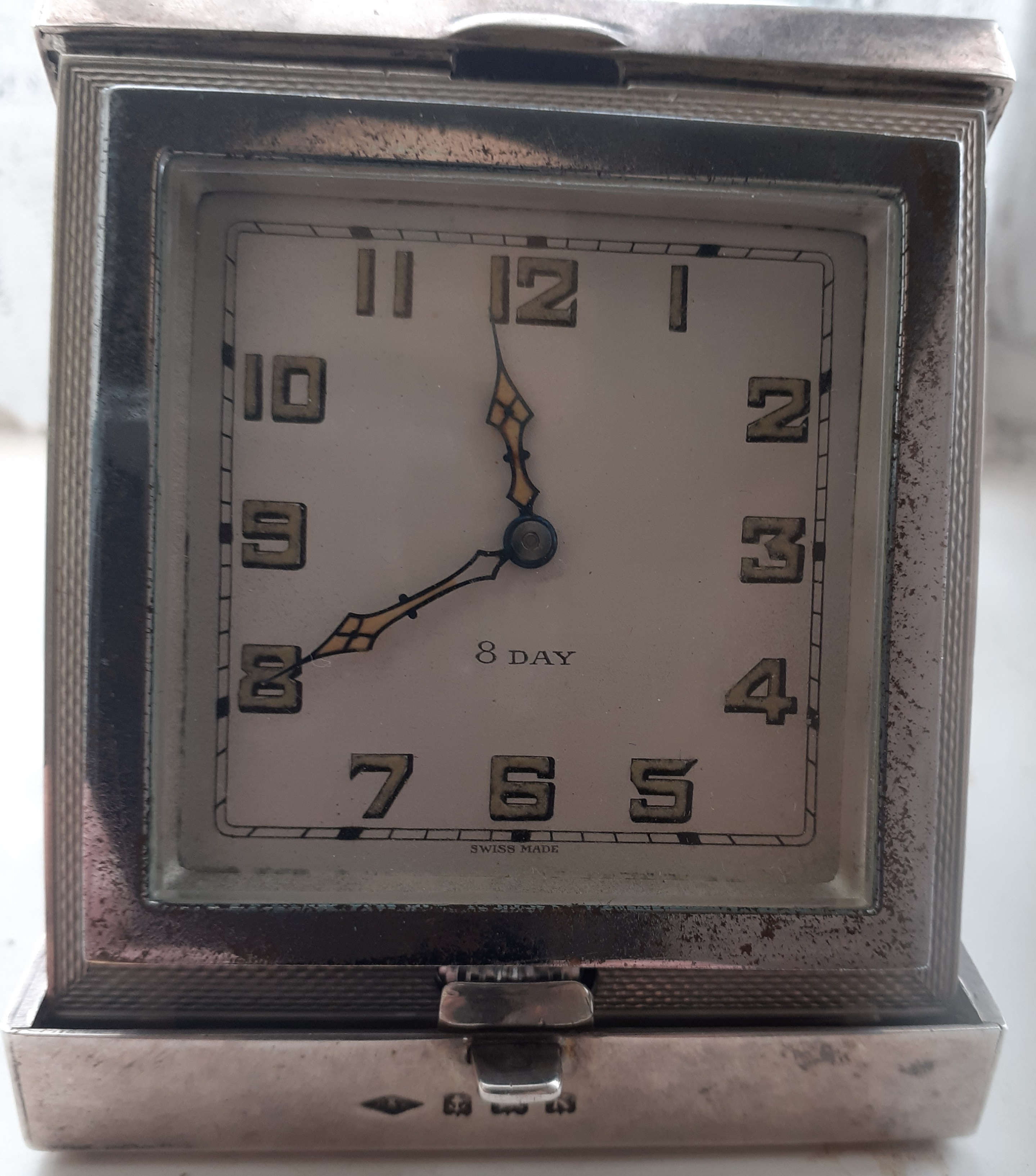 With thanks to Gary Wright
With thanks to Gary WrightRunner-up (Medal and £25, presented by the Cinque Ports Club) in the Folkestone Aero Trophy in September 1935, flying a BA Eagle
Spent 1939 to 1953 in the Royal Navy/Fleet Air Arm, ending as Commander.
d. 8 Feb 1973 - Birchington, KentBuried All Saints, Birchington:
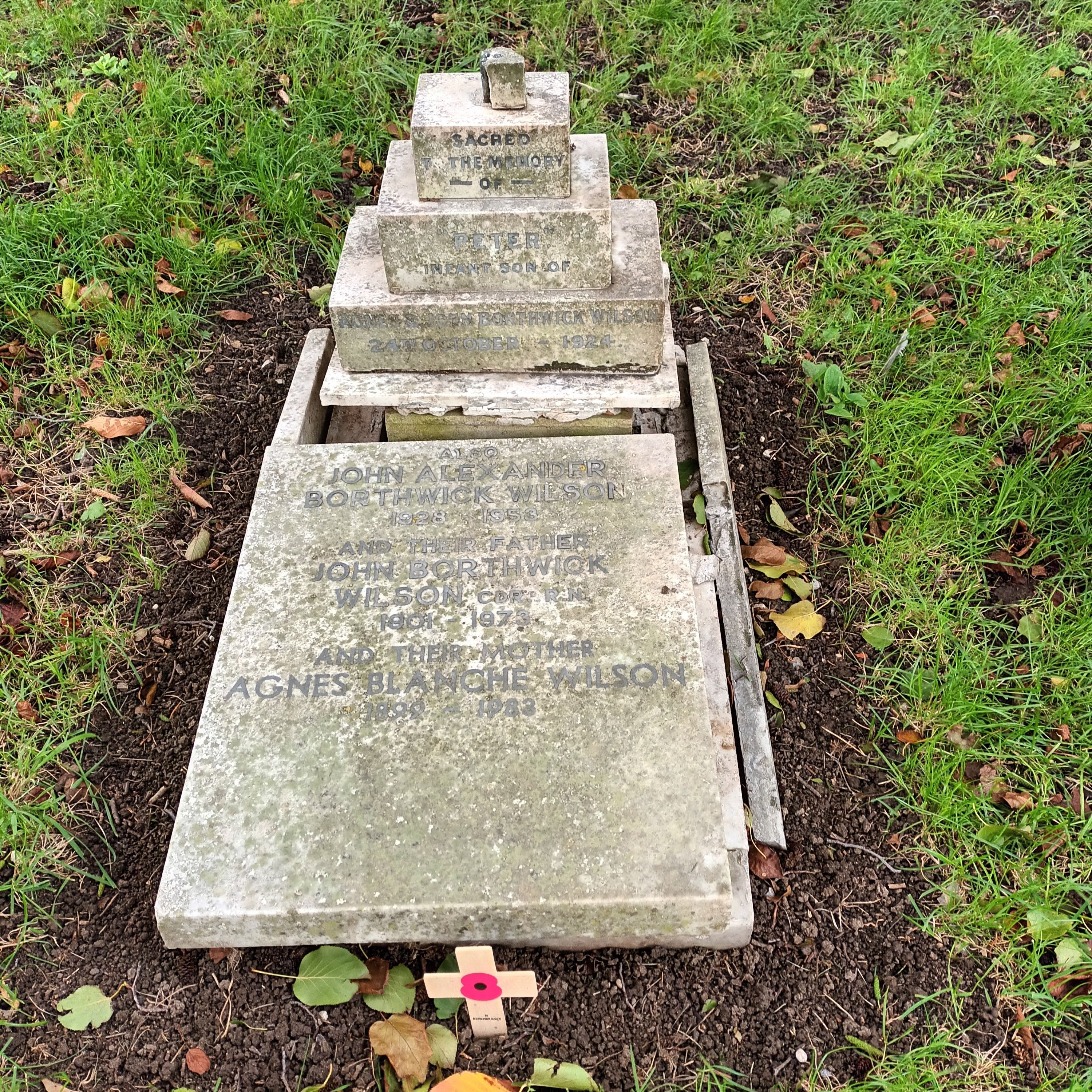
Based on research by Alexandra Gilbert
Page 2 of 3

